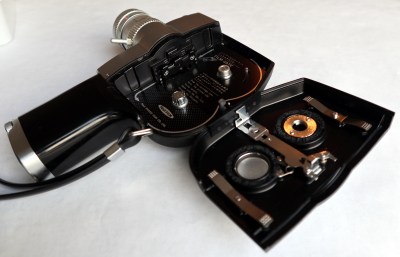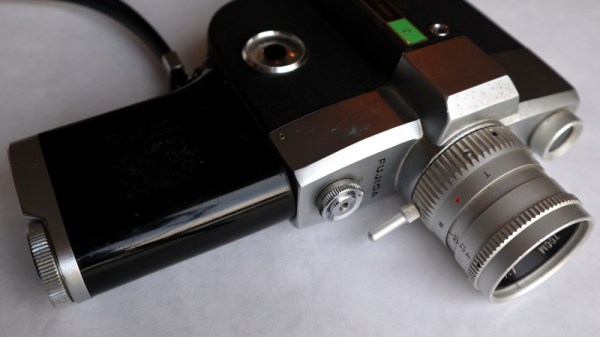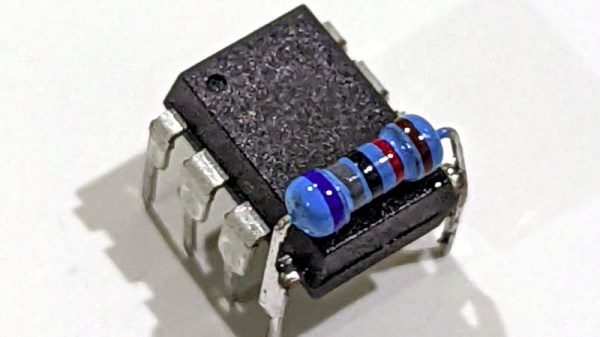It’s dangerous for a hardware hacker to go into a second-hand store. I was looking for a bed frame for my new apartment, but of course I spent an age browsing all the other rubbish treasures on offer. I have a rough rule of thumb: if it’s not under a tenner and fits in one hand, then it has to be exceptional for me to buy it, so I passed up on a nice Grundig reel-to-reel from the 1960s and instead came away with a folding Palm Pilot keyboard and a Fuji 8mm home movie camera after I’d arranged delivery for the bed. On those two I’d spent little more than a fiver, so I’m good. The keyboard is a serial device that’s a project for a rainy day, but the camera is something else. I’ve been keeping an eye out for one to use for a Raspberry Pi camera conversion, and this one seemed ideal. But once I examined it more closely, I was drawn into an unexpected train of research that shed some light on what must of been real objects of desire for my parents generation.
A Thrift Store Find Opens A Whole New Field

The Fuji P300 from 1972 is typical among consumer movie cameras of the day. It takes the form of a film magazine with a zoom lens assembly on its front, a reflex viewfinder on its side, and a handle with a shutter trigger button on it protruding vertically below the magazine and also housing the batteries.
Surprisingly it still has a mercury cell that would have powered its light meter; a minor annoyance to dispose of this correctly. Sometimes these devices had clockwork motors, but this one has an electric motor. It also has a light sensor that is coupled to some kind of electromechanical aperture. It would have been an expensive camera when it was new, probably as much of a purchase as an SLR or a decent mirrorless camera here in 2021.
The surprise came when I opened it up, for it looked like no other 8mm camera I had seen. I’m familiar wit the two reels of a Standard 8 or the boxy cassette of Super 8, but this one used something different. That film magazine is made to fit a compact twin-reel cartridge whose film fits in a metal film gate. This is a Single 8 camera, Fuji’s entry in the all-in-one 8 mm film market, and a format I never knew existed. To explain my unexpected discovery it was necessary to delve into the world of home movie formats in the decade before videotape arrived and drove them out. Continue reading “The Seductive Pull Of An Obsolete Home Movie Format”














